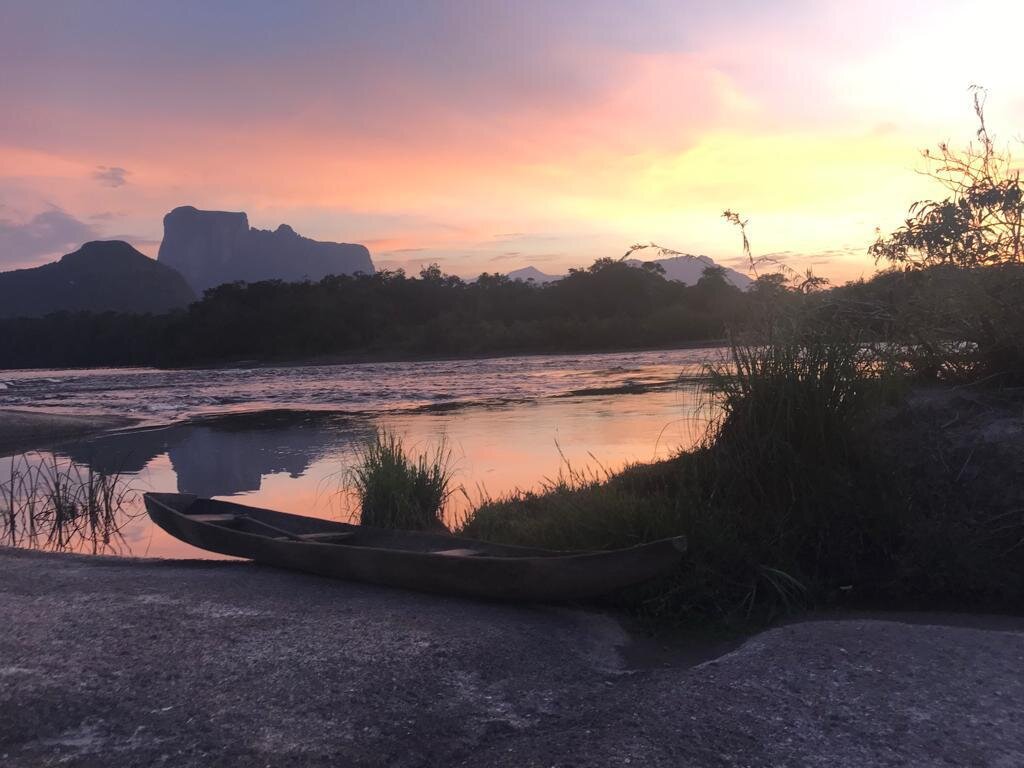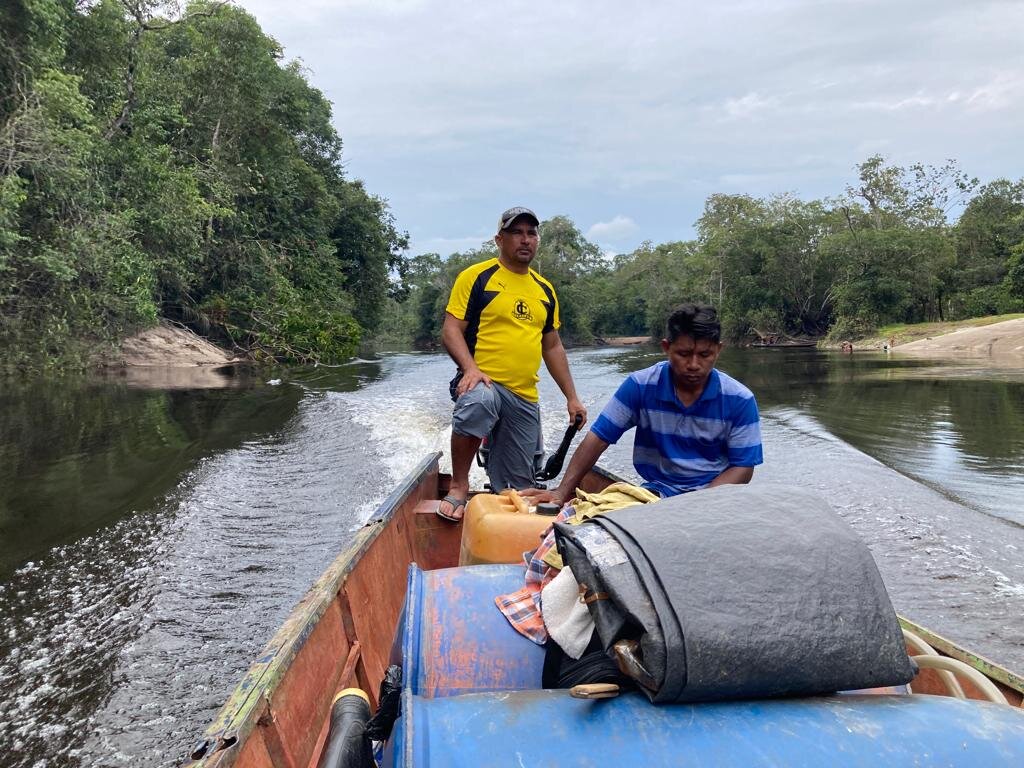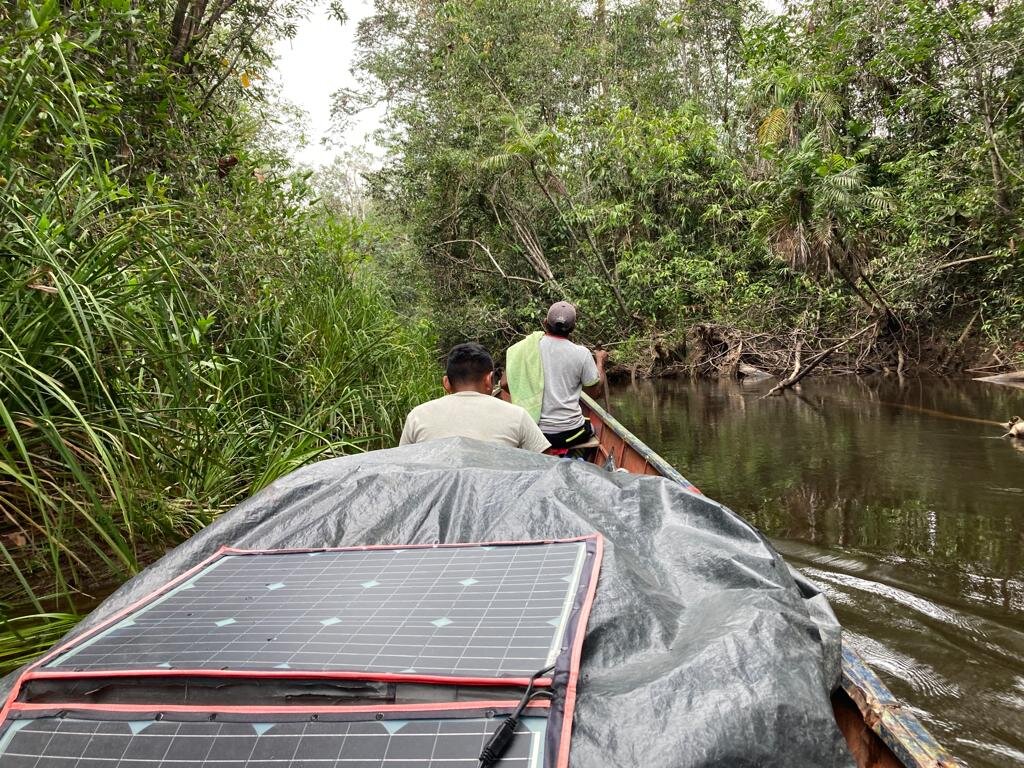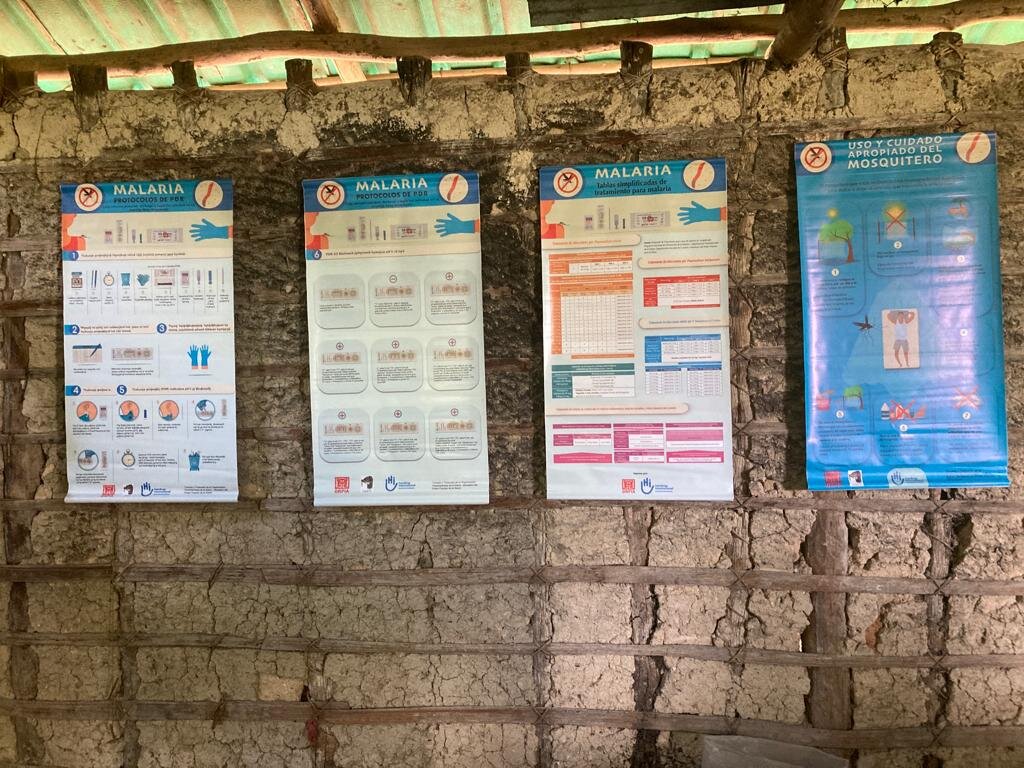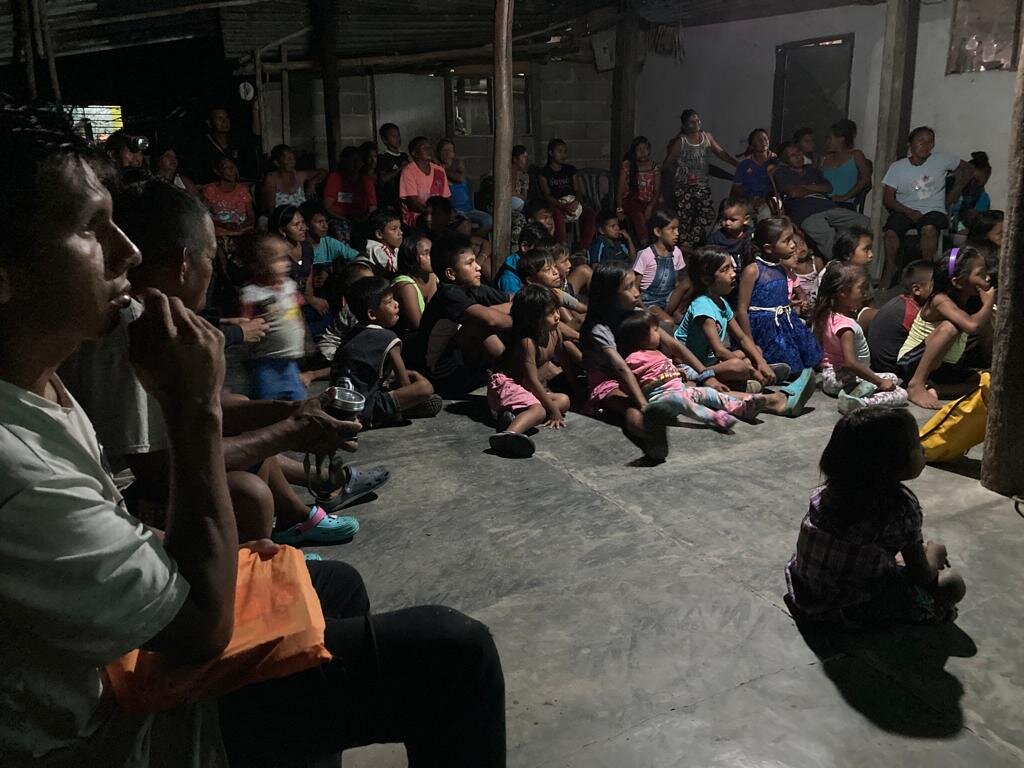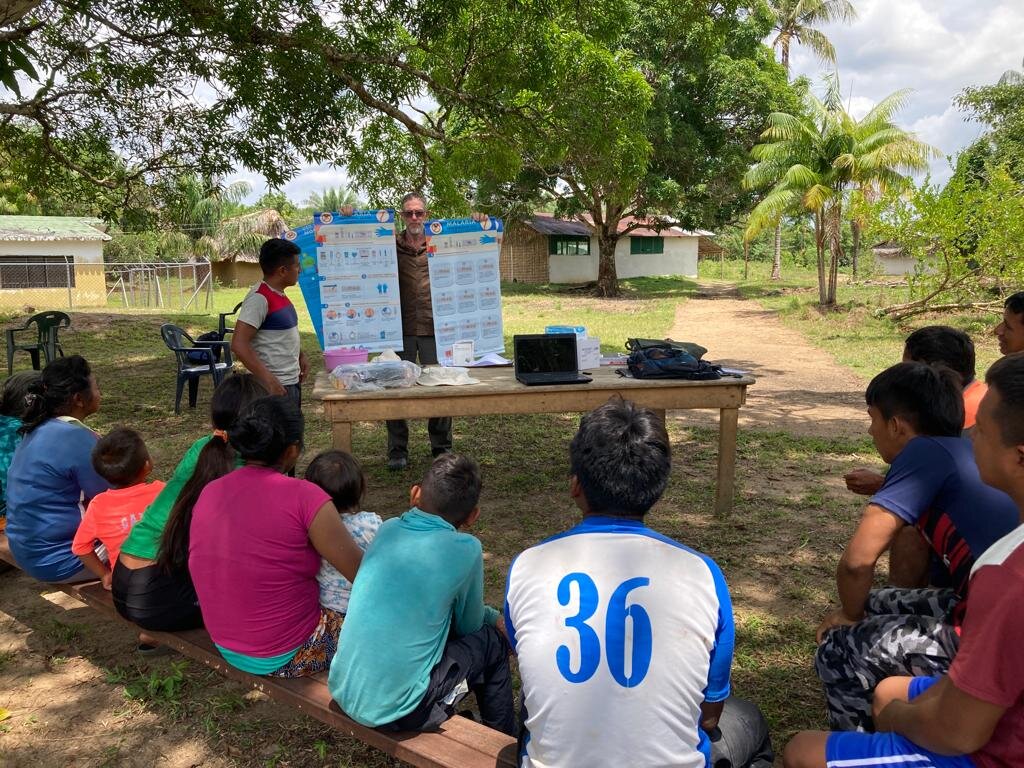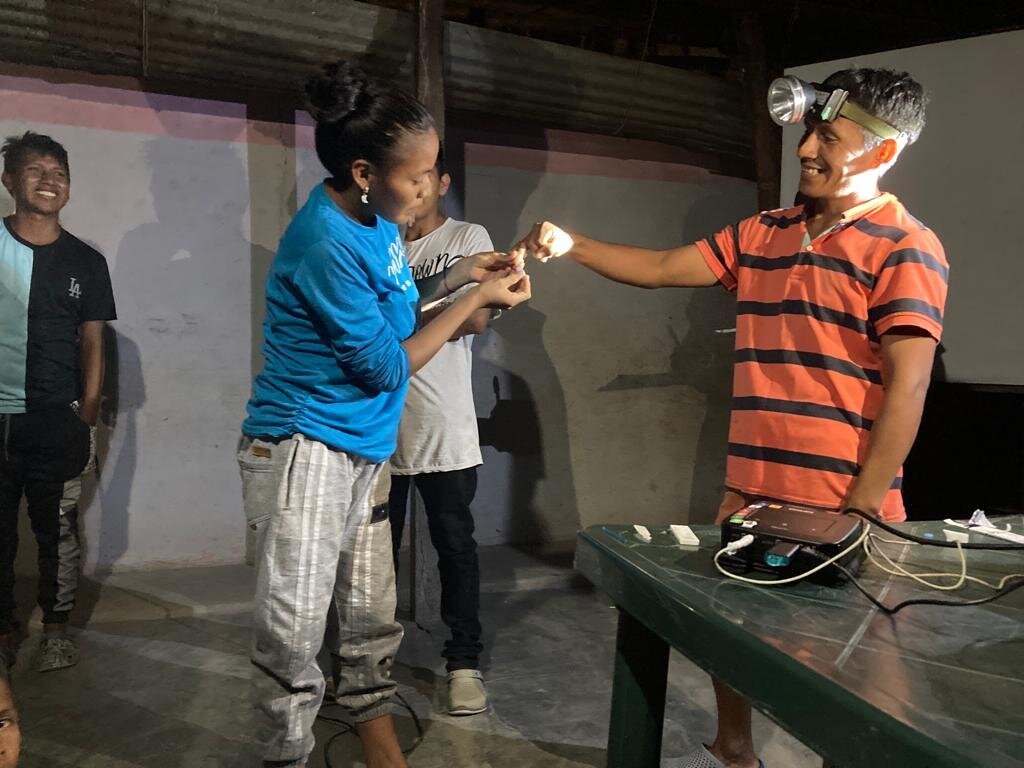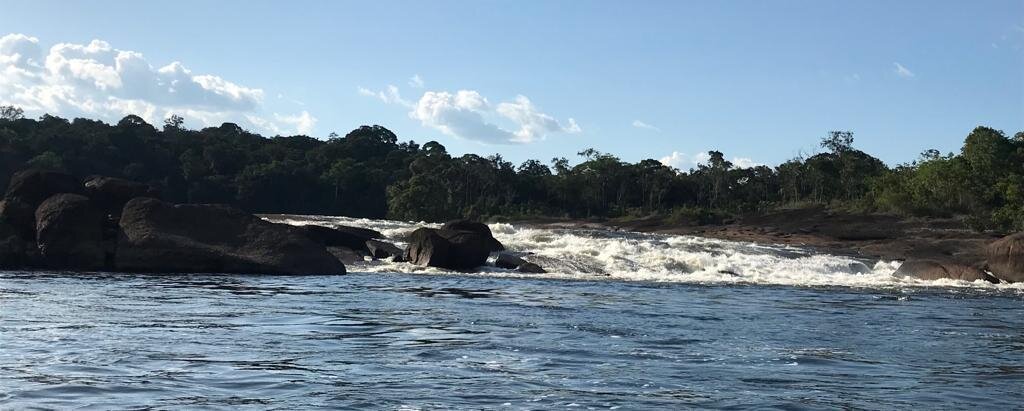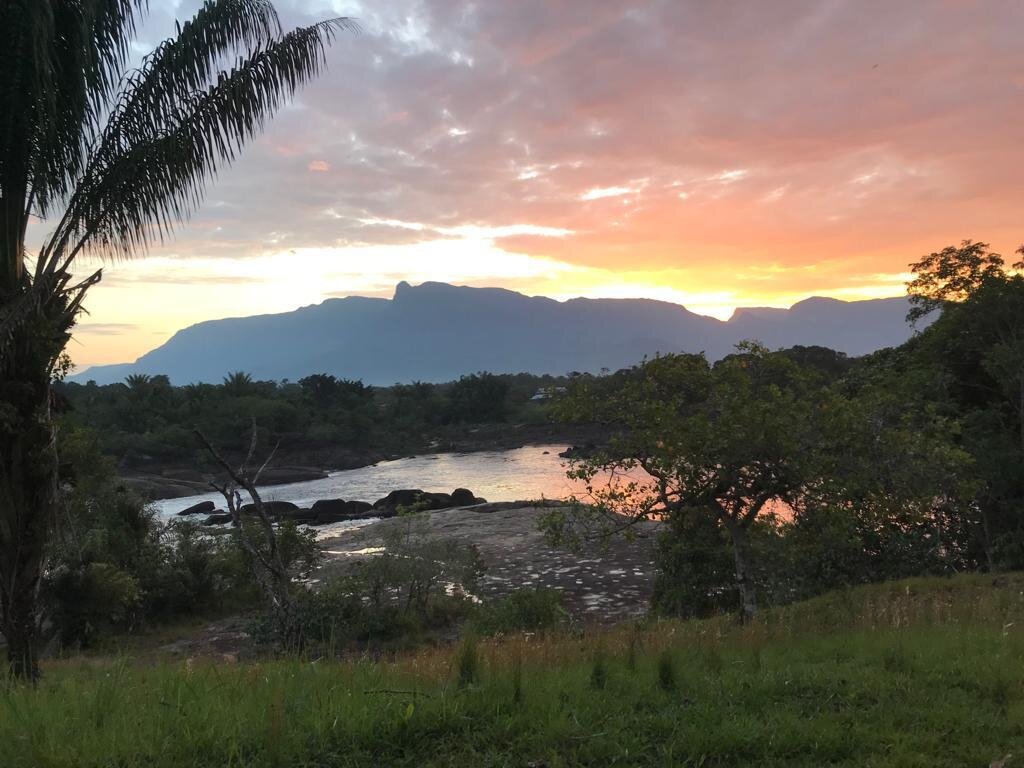By Susannah McCandless, for the project team | Project Coordinator
In April of 2023, project personnel returned to the Piaroa community of Betania de Topocho, delivering medications, medical equipment and supplies. We checked in with community health personnel on their work to curb the incidence and spread of malaria, through continued prevention (those essential insecticidal mosquito nets), and sector-based management of testing and treatment. The morbidity from malaria has indeed reduced significantly.
The project grows
Then, in a first for the project, after visiting Betania we just kept going, expanding the project’s reach to many additional small indigenous communities. In total, we delivered malaria prevention outreach, education and supplies to 33 communities, ranging in size from 10 to 1,000 people. Project personnel visited other Indigenous communities, like Betania, situated along the Ejes Carreteros Norte and Sur. Mostly, though, they traveled by a dugout boat called curiara, along the Sipapo, Autana, Cuao, and Orinoco Medio, rivers in the watershed of the Orinoco. We were accompanied by Wilson, a microscopist, and Braulio, the boat driver, both Piaroa.
The visits were articulated and planned with another CSO whose goal project was the installation of community radios systems, and requested our assistance to help to train community members on different aspects of the malaria infection, its diagnosis and proper delivery of treatment as well as the good use of mosquito nets. All of these elements are parts of the strategies of malaria control based on the communities’ leadership. We also delivered mosquito nets, RDTs (rapid diagnostic tests, ‘malakits’), treatments, scales and different office materials to record the cases of malaria morbidity (name, demographic categories, symptoms, infectious sites, dates).
Our education sessions, delivered in Piaroa, focused on malaria diagnosis and treatment. We talked about what malaria is, and how it operates. By building an understanding of transmission processes, we could address what community members can do to minimize risk, and the individual as well as community responsibility for malaria prevention. While our trainings focused on skilling those managing malaria, we also projected the Piaroa-language malaria prevention and malakit use educational video team members and Piaroa-speaking clinic staff had created, using a mini-projector. In addition, we were able to use bluetooth to share that educational video with those with smartphones, even in the absence of a cell or internet signal.
Our goal was to increase training of community health personnel on preventing, diagnosing, and managing malaria. But in each community, a lot of people attended--children, adults, elders, teenagers--everyone. We shared the videos in 28-29 different places; we provided information, and gave 12 more extensive, formal workshops. We gave out pendones -- durable hanging posters--with information on mosquito net care, malakit (rapid testing and diagnosis) use and dosing, and education on malaria transmission.
More than just training
We delivered long-lasting insecticidal nets (LLINs) to people who hadn’t previously received them, 301 in total. Some communities we visited had previously received insecticidal nets from the same entities with whom we are working--the Venezuelan Health Ministry, UNDP, the Pan-American Health Organization, and the Global Fund. However, without a complete and accurate census, they could not determine whether they had reached everyone, especially since people often move around seasonally.
In almost every community we visited we worked collaboratively, in Piaroa, to check and update the local census with whomever held the knowledge–health or cultural promotores, microscopists, and community health nurses. They knew who didn’t yet have a mosquito net. The communities we visited, along the Sipapo River, are close to mining activity. Mining for cassiterite (a tin oxide), cobalt, and gold greatly increases the incidence of malaria in the region, which is considered an endemic malarial area. For these communities, the information, insecticidal nets, rapid diagnostic kits, and malaria treatments we were able to deliver were essential. We also conducted more than 50 in-depth, 21-question surveys to understand community perceptions of the impacts of the national malara control strategy.
We are proud and a little amazed to have been able to share knowledge and materials so widely, and to be so well-received in a region where a member of the project had last visited some 35 years ago. We were impressed by the commitment of the community health workers and leaders we met, and by the broad and enthusiastic engagement we encountered in our outreach.
What's next
We return to Venezuela next week, at the beginning of August 2023, to carry out project outreach and trainings in remote areas of Jöti territory, along tiny tributaries navigable only in the height of the rainy season. In our next report we hope to tell you about those visits. We’ll also share how this small but mighty project, which adapts the Pan-American Health Organization’s malaria prevention and control strategy and places it in community hands, is beginning to serve as a model nationally and internationally. Thank you for your support of this amazing project!
____
This report by the numbersWe visited 33 communities, and delivered:
*The support kits contained a scale, letter-size printed laminated posters, boxes of pens, pencils, erasers, sharpeners, notebooks, bond--graph? paper, ruler, colored pencils, and other office supplies.
They also contained some medical supplies, such as as gloves, alcohol wipes, masks, gauze, etc.
Detailed list of activities described in the preceding report
I. Drafting, revision and correction of texts in the Uwottüja language of the Posters/Banners:
1. Proper Use and Care of the Mosquito Net
2. RDT protocols: materials and their functions, sample taking, use of the test.
3. RDT protocols: reading different results
4. Administration of treatment.
II. Departure Sipapo-Orinoco
Activities:
a. Training Workshop
b. Census of people missing mosquito nets.
c. Provide mosquito nets.
d. Deliver a support kit to community health promoters, including a mechanical scale.
e. Deliver malaria control supplies (RDTs and treatments).
f. Deliver supplies donated by Doctors Without Borders (MSF).
g. Knowledge, Attitudes and Practices (KAP) Survey among Indigenous Peoples.
h. Transfer Videos.
i. Consultations with patients (diagnosis and treatment).
j. Survey on the general situation with malaria, problems and special needs.
Project reports on GlobalGiving are posted directly to globalgiving.org by Project Leaders as they are completed, generally every 3-4 months. To protect the integrity of these documents, GlobalGiving does not alter them; therefore you may find some language or formatting issues.
If you donate to this project or have donated to this project, you can receive an email when this project posts a report. You can also subscribe for reports without donating.
Support this important cause by creating a personalized fundraising page.
Start a Fundraiser